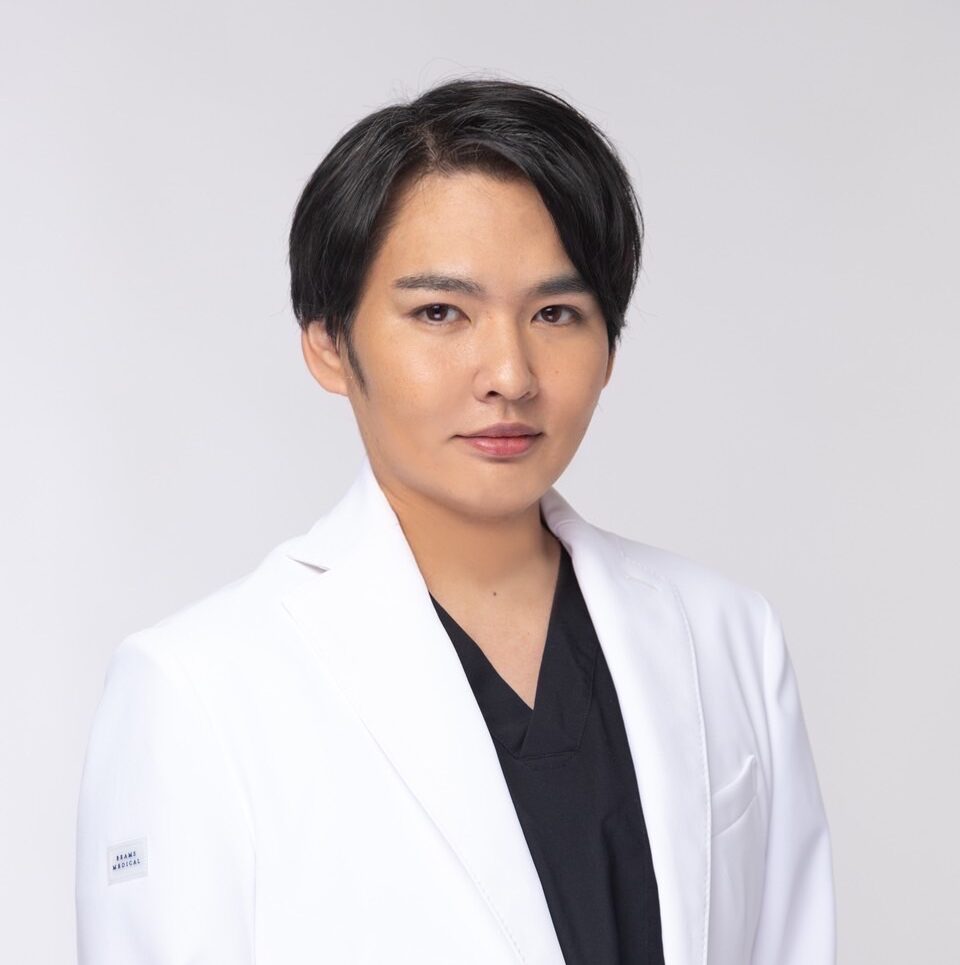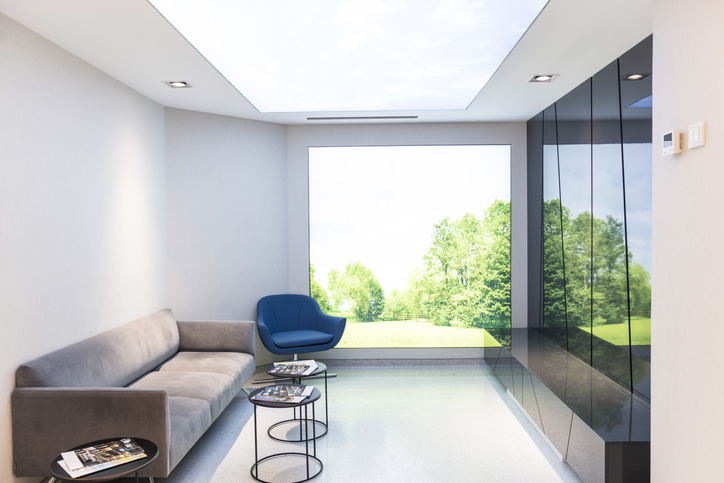In the world of cosmetic medicine, rhinoplasty is one of the most popular procedures because of its power to significantly alter one's appearance. However, the decision to do so should be made with caution.
In this section, we will delve into the basics of rhinoplasty, the secrets to success, and important points to avoid regrets. We hope to provide as much information as possible to help those considering rhinoplasty make a regret-free choice. From choosing the right clinic to post-operative care, we will answer any questions you may have about undergoing cosmetic procedures.

Graduated from the Faculty of Medicine, National Kumamoto University. After serving as the director of major beauty clinics in Japan, etc., he opened Aladdin Aesthetic Clinic in 2023. He is a professional in aesthetic medicine with a doctorate in anti-aging research and many years of experience. With the motto of "Toward the realization of cosmetic medicine without lies," he aims to be the "Only One" together with his patients.
Basic Process and Objectives of Rhinoplasty

Rhinoplasty is a very popular procedure in the field of cosmetic medicine and one that many people choose in their quest for a more balanced facial appearance. The main goal of this surgery is to change the shape and size of the tip of the nose, or nasal tip. By taking into account the individual's facial balance and aiming for a more harmonious beauty, it can increase self-confidence and improve satisfaction with one's appearance.
Rhinoplasty is generally performed under local anesthesia. The specific procedure depends on the patient's current nasal shape and desired result, but usually involves removing excess fat and tissue from the nose and reshaping the nasal apex by reshaping or adding cartilage.
This process may involve shaving, adding, or repositioning cartilage and is done with great care to give the tip of the nose a natural, harmonious shape.
The key to this procedure is to approach the shape of the nose that is most pleasing to the individual patient, taking into consideration the balance of each patient's face. Although the changes resulting from the surgery are subtle, the impact can greatly enhance the patient's confidence and satisfaction with their appearance, but on the flip side, without a solid series of medical procedures, the desired shape may fail to be achieved, or it may fall apart over time.
Common examples of regret after rhinoplasty

Although rhinoplasty surgery has the potential to significantly improve a patient's facial appearance, it can end up with a different result than expected, which may result in patient regret. The following is a more professional and detailed description of cases of regret after rhinoplasty.
Different results than expected
Many patients have high expectations for an improved self-image and tangible changes in appearance prior to surgery. However, a large gap between expected and actual results after surgery can lead to deep disappointment.
The shape of the nasal apex is a central feature of the face, and even subtle changes in its shape can greatly affect the facial impression. Dissatisfaction may arise when the shape, size, or angle that the patient imagined differs from the actual result obtained through surgery. This may be due to a simple surgical error, but it is also often due to insufficient communication between the patient and the physician or unrealistic patient expectations.
Overall imbalance disharmony
Although rhinoplasty focuses only on the tip of the nose, it must also be in harmony with the balance of the entire face. Even if the ideal shape of the nasal tip is achieved after surgery, if it does not match the balance of the entire face, it may look unnatural and leave the patient unsatisfied.
Therefore, it is recommended that you and the doctor work out an overall simulation during the counseling session in order to achieve a satisfactory result.
Unnatural appearance
If the results are unsatisfactory and excessive correction is made, the natural harmony of the nose with the rest of the face may be lost, as mentioned above. In particular, excessive correction of the nasal apex may require other procedures on the entire face, and the overall impression may become unnatural.
Breathing problems
Although rhinoplasty is performed primarily for cosmetic purposes, it can also affect the internal structure of the nose. In some cases, in particular, repositioning the nasal apex can narrow the space of the nasal cavity, making breathing difficult.
This may be due to insufficient consideration of the functional aspects of the nose during the surgical planning and execution process. In addition, the nose may feel stuffy during the downtime after surgery, so it is necessary to communicate with your doctor about your pre- and post-operative care.
Risks and side effects from rhinoplasty downtime

Rhinoplasty, like any other surgery, involves risks and side effects. Ensuring that patients understand these risks and have appropriate expectations is the first step toward a satisfactory surgical outcome.
And while downtime for rhinoplasty varies widely depending on the extent of the procedure, the individual's ability to recover, and postoperative care, there are some general guidelines that can be followed.
Immediately and for several days
There is a risk of swelling and internal bleeding. Swelling and internal bleeding are most noticeable in the nose and surrounding area during the first few days immediately following surgery. During this period, when the appearance of the face is most altered, it is recommended that patients refrain from activities of daily living, but the use of cooling packs and keeping the head elevated can help reduce swelling.
Mild to moderate pain or discomfort in the nasal area may also occur immediately after surgery. Depending on the individual, painkillers may be prescribed to take care of the pain. Otherwise, it may be advisable to refrain from drinking alcohol and taking long baths or saunas for one week from the day of the procedure due to the possibility of prolonged swelling and internal bleeding.
1 week later
In most cases, the swelling and internal bleeding will begin to subside in approximately one week. Many people can begin to gradually return to their daily activities at this point, as the swelling and internal bleeding gradually diminish, but they may not yet be able to return to full social activities, such as strenuous exercise or saunas. Typically, the first follow-up is performed about one week after surgery, at which time the sutures may be removed.
2 weeks to 1 month
During this period, swelling and internal bleeding improve significantly and the results of the surgery begin to be more clearly visible. Many patients are able to return to daily activities and light exercise at this point. There may also be a gradual recovery from the dullness and discomfort of sensation at the surgical site.
What you should know before considering rhinoplasty
When considering rhinoplasty, there are several important steps to take to ensure a successful outcome.
The first step is to select an appropriate clinic. When selecting a clinic, it is important to check not only its reputation and surgical track record, but also whether it provides appropriate medical care and whether there are any problems with follow-up before and after the procedure.
While the results of rhinoplasty surgery can be highly dependent on the skill and experience of the physician, it is crucial to carefully consider the depth of experience, expertise, and past cases that the physician has performed and to choose a physician who can meet your expectations. Good communication with the doctor is also key to the success of the surgery, so it is very important to make sure that he or she understands your requests and can set realistic expectations together.
Finally, during the pre-surgery consultation phase, you can confirm that the desired result is feasible and receive a detailed explanation of the risks and side effects associated with the surgery. At this stage, you can share your specific surgical plan with the doctor and discuss recovery time and necessary preparations, so if you have any questions or concerns, it is advisable to resolve them at this time.
By taking the above steps, patients will be better prepared for rhinoplasty surgery and will be more satisfied with their postoperative experience. Through the selection of the appropriate clinic and physician, and adequate pre-surgery counseling, a successful rhinoplasty can be achieved.
summary
With proper preparation and understanding, rhinoplasty can produce beautiful results. The key is to have adequate communication and consultation with an experienced physician and to have realistic expectations about the risks and recovery time. Proper postoperative care and follow-up as needed is also important.
At Aladdin Aesthetic Clinic, based on our many years of experience in cosmetic medicine and cosmetic dermatology and the knowledge of our doctoral degree, we provide counseling that aims to be "only one", offering the best treatment for each person we meet. We offer only the necessary treatments without any unnecessary information or suggestions.
Feel free to use our official LINE account for 24-hour counseling and reservations. Please feel free to contact us for free counseling for the first time or if you have any concerns.





